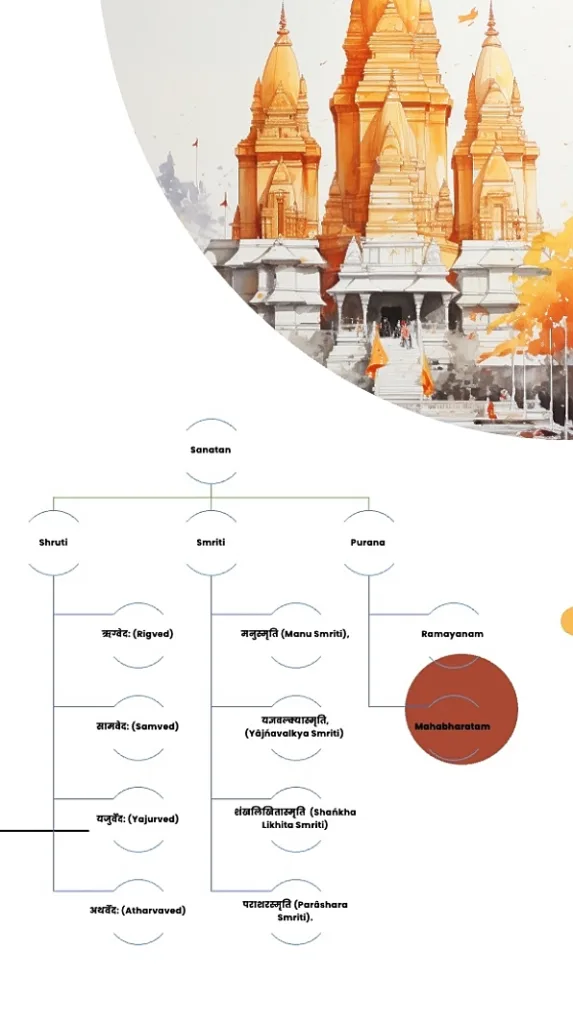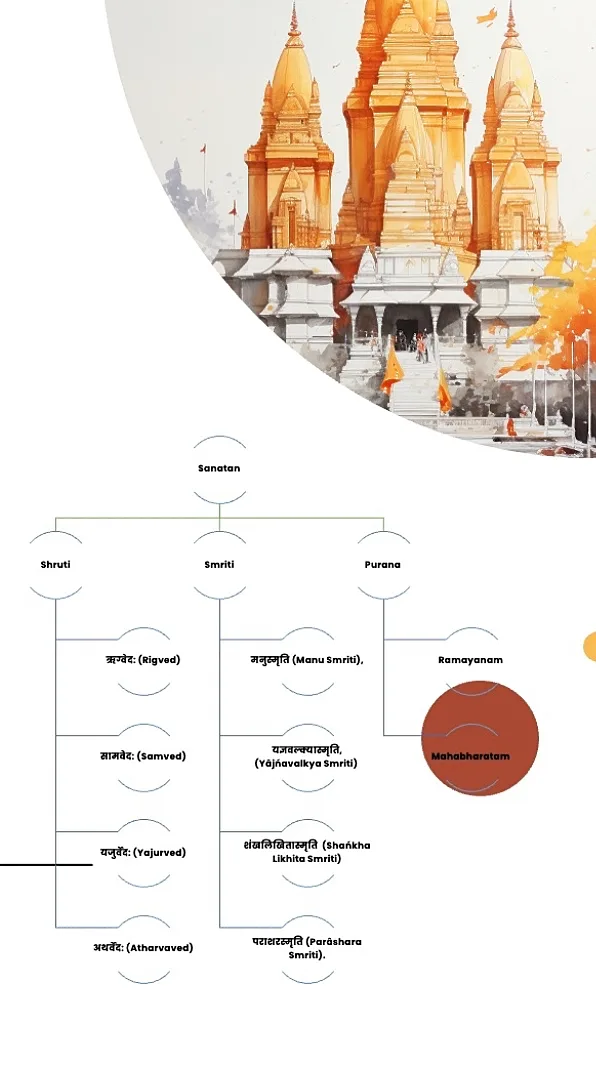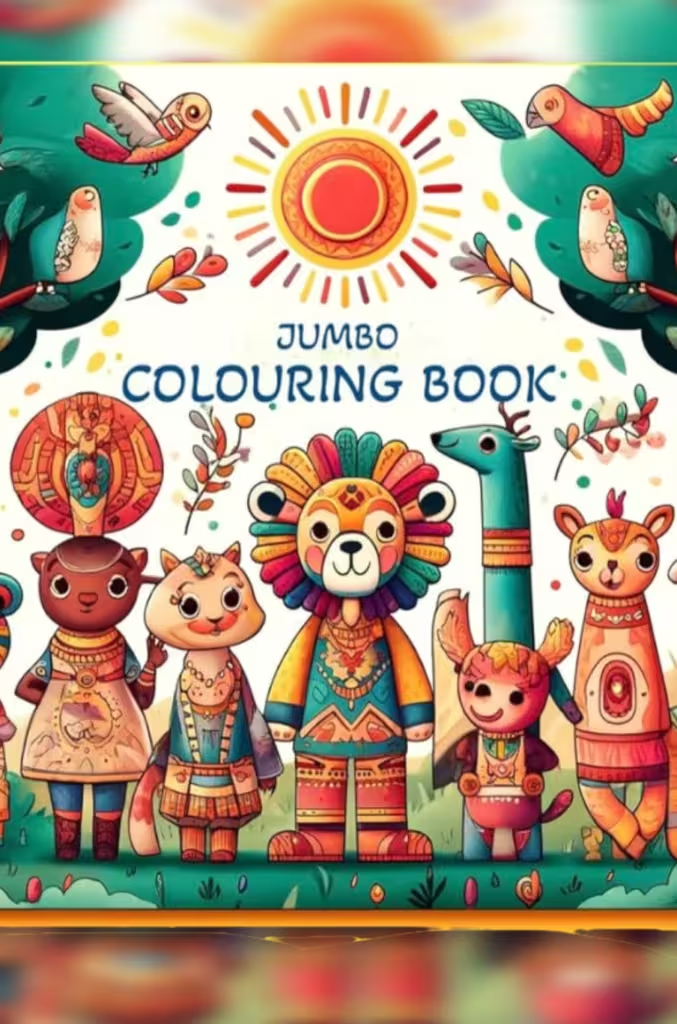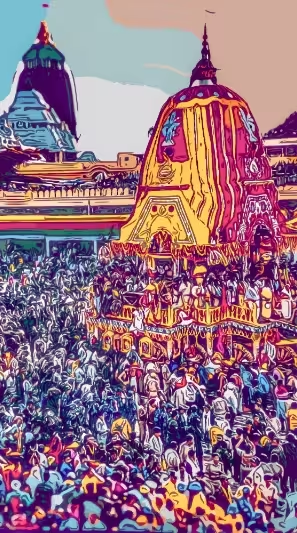
Sanatan Dharma, also known as the eternal faith, forms the bedrock of Hinduism, the world’s oldest living religion. This profound tradition traces its origins back to the Vedas, sacred scriptures gifted to humanity in the mists of time. It was first practised by the noble Aryan race inhabiting the northern regions of today’s India; as a result, this land was once called Aryavarta.
Now, when we speak of Hinduism, we’re essentially referring to Sanatan Dharma, an age-old belief system that has produced an array of illustrious figures over the centuries. Think of the renowned teachers, valiant warriors, prolific writers, wise sages, revered saints, noble kings, strategic statesmen, generous benefactors, and patriotic leaders that have emerged from it. Delving into the breadth and depth of Sanatan Dharma is like embarking on a rewarding journey; the more you explore, the more you come to appreciate its wisdom.
Underlying Principles of Sanatan Dharma
Envision Sanatan Dharma as a house. The foundational bedrock would be श्रुति / Shruti (that which has been heard), while स्मृति / Smriti (that which has been remembered) forms the walls of this house.
Let’s first look at Shruti. These are the sacred teachings given to the sages by the Devas. Initially, these teachings were not written down; instead, they were memorised and transmitted orally from the guru (teacher) to the shishya (pupil).
These sacred teachings encompass the four Vedas (चतुर्वेदा: / Chaturvedâh): ऋग्वेद: (Rigved) सामवेद: (Samved) यजुर्वेद: (Yajurved) and अथर्वेद: (Atharvaved), all of which constitute the groundwork of Sanatan Dharma. Each Veda consists of four integral parts: the मंत्र: संहिता (Mantra Collection), भ्रह्मणम (Brahmanam), उपनिषत् (Upanishat), and उपवेद: / तन्त्रम (Upvedah / Tantram).

The Mantra Collection comprises hymns to the Devas. When recited with correct intonation during religious ceremonies, they’re believed to have powerful effects. Brahmanam provides detailed instructions for performing these ceremonies and the associated stories. Upanishat offers profound philosophical teachings about the supreme God, the self, the universe, life, death, and liberation, forming the basis of all philosophy. The Upvedah/Tantram imparts practical scientific instructions. However, only fragments of these ancient tantric practices remain today as the sages felt they were unsuitable for times when people were less spiritual.
Next, we have स्मृति (Smriti), accepted as the secondary authority after श्रुति / Shruti. स्मृति (Smriti) includes four significant works penned by the sages, outlining the laws for individual, familial, social, and national life. These laws shape and govern Sanatan society. The works are मनुस्मृति (Manu Smriti, or Manava Dharma Shastra), (२) यज्ञवल्क्यास्मृति, (Yâjńavalkya Smriti) (३) शंखलिखित्मिति (Shańkha Likhita Smriti), and (४) पराशरस्मृति (Parâshara Smriti).
Enriching the Structure: The Purânâs
The Purânâs, or historical texts, serve as the windows of this ‘Sanatan Dharma house’. The Purânâs comprise fascinating stories, histories, and allegories, intended for the general population, particularly those unable to study the Vedas. They’re engaging, informative, and full of rich detail.
Notably, two epic poems, the Ramayanam and Mahabharatam, form the heart of Bharatiya Itihasa (Indian history). They provide invaluable insights into ancient India – the people, their customs, lifestyle, arts, culture, values, and society. Reading these works illuminates the magnificence of ancient India and what it will take to rejuvenate that grandeur in present-day Bharatavarsha.
To sum up, understanding and living by the tenets of Sanatan Dharma can enrich our lives with profound wisdom. Its principles guide our lives and provide insights into an extraordinary civilisation’s rich history, heritage, and wisdom.





